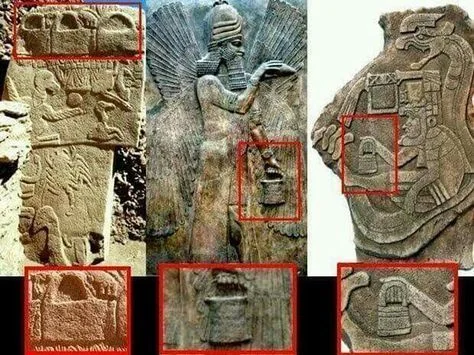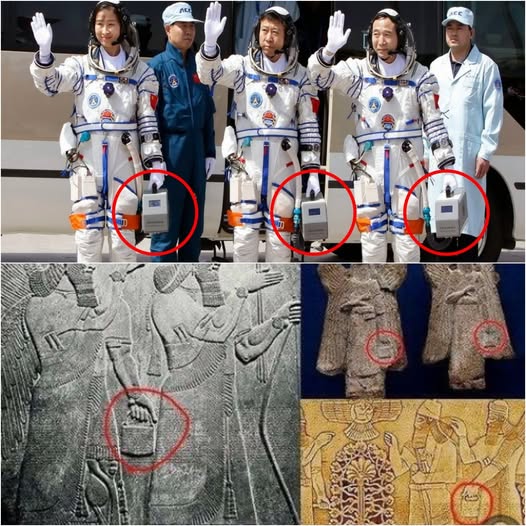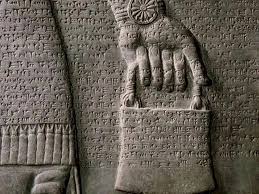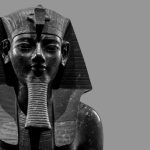Unveiling the Enigmatic Anunnaki Bag: Myth, Symbol, or Artifact of Lost Civilizations?

For decades, a curious image has captivated historians, archaeologists, and seekers of the mysterious: a small, box-like object held in the hands of ancient Mesopotamian gods. Nicknamed the “Anunnaki bag”, this artifact appears in reliefs from Assyria, Babylon, and Sumer — and has sparked questions that blur the line between scholarship and speculation.
A Ritual Object in Ancient Mesopotamia
Archaeologists identify the object not as a “bag of the gods” but as a banduddu, a ritual bucket carried by priests or divine figures. Alongside a pine-cone-shaped object, it was used to sprinkle holy water during purification ceremonies. In temple walls and palace carvings, these buckets symbolized fertility, blessing, and the renewal of life.
To scholars, there is no enigma: the bucket was a ritual tool, no more mysterious than the incense burners of medieval churches. The “symbols” around them are recognizable cuneiform inscriptions, documenting royal deeds and divine rituals.
The Rise of a Modern Mystery
Yet in the modern imagination, the Anunnaki bag has become much more. Writers such as Zecharia Sitchin reinterpreted Mesopotamian mythology through the lens of extraterrestrial contact, suggesting the Anunnaki were alien beings who gifted humanity with knowledge — and that these “bags” were containers of advanced technology.
Adding to the intrigue, similar shapes have been spotted in art from other civilizations, from Mesoamerican carvings to sacred motifs in Anatolia. To some, these parallels hint at a shared wisdom or lost civilization that spanned the ancient world.
Cryptic Symbols and Prophecy
Were these objects foretold in ancient prophecies? The truth is more grounded. No known Sumerian or Akkadian text describes the bags as divine tools of power. Prophetic language in Mesopotamian records spoke of kings, wars, and celestial omens — not artifacts. Still, the human imagination has filled the silence with stories: the bags as vessels of genetic code, cosmic energy, or forgotten wisdom.
Between History and Imagination
The Anunnaki bag stands at a crossroads of fact and myth. To historians, it is a symbol of ritual purification. To others, it is a doorway into a larger mystery, connecting cultures separated by oceans and centuries.
Perhaps the enduring power of the Anunnaki bag lies not in what it was, but in what it represents: humanity’s constant search for meaning in the remnants of the past, and our willingness to weave myths that transcend time.











